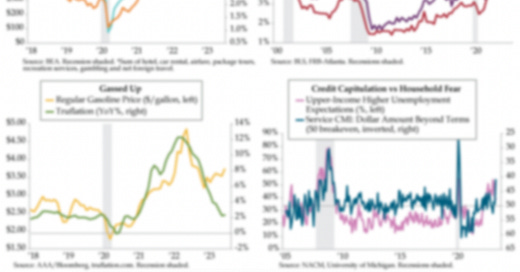After a much-needed beach week, feet nestled in Destin’s powdery sands on Florida’s Gulf and being as unplugged as feasible given QI’s publication schedule, I was struck upon reentry by the ubiquity of the headlines during Saturday’s 11-hour drive back to Dallas:
The Wall Street Journal: “A Soft Landing in Sight for the U.S. Economy”
CNBC: “The Pathway to a Soft Landing is Still Very Much Possible”
Bloomberg: “Labor Data to Fuel Soft-Landing Narrative”
Reuters: “Wall Street Ends Week Higher on U.S. Soft Landing Hopes”
The Financial Times: “Confidence Grows That Federal Reserve Can Deliver a Soft Landing for U.S Economy”
The New York Times: “Soft Landing Optimism is Everywhere. That’s Happened Before”
In that last one, the NYT’s Jeanna Smialek referred to a September 2007 Dallas Fed staff paper, “Economic Growth Remains Moderate,” which “concluded that the United States should manage to make it through the subprime mortgage crisis without a crisis.” The paper’s author, Tao Wu, had clearly sided with Ben Bernanke, who had assured his minions throughout the system that subprime would be “contained.” In Wu’s estimation, “A soft landing with a slow convergence to trend growth is probable, unless uncertainties among households and investors suddenly trigger a sharp consumption slowdown or the credit crunch spreads beyond the housing sector.”
Though Wu and I were technically both in the Research department, he and I couldn’t have seen the world through more dissimilar prisms.




